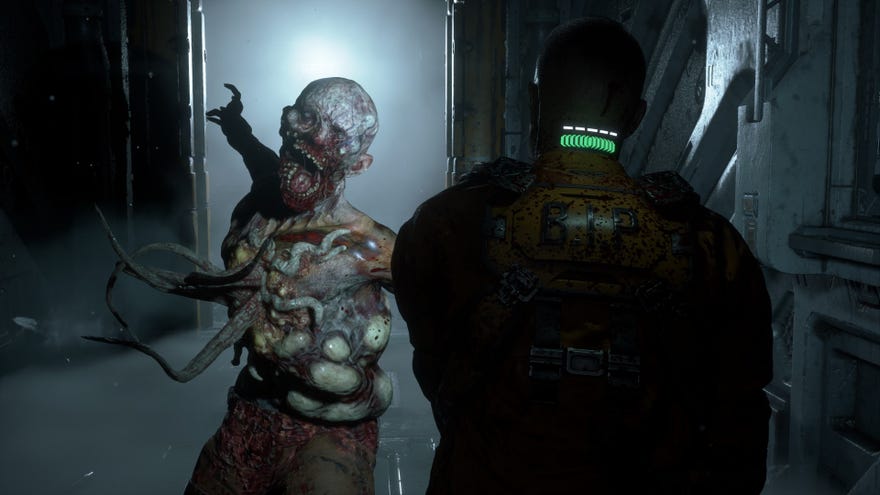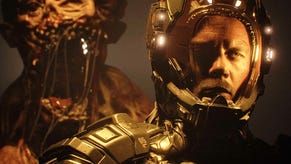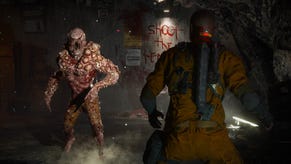The Callisto Protocol is inspired by Die Hard and Shaun Of The Dead
And includes "reverse dismemberment"
Back at Geoff Fest, I spoke with Glenn Schofield about The Callisto Protocol, its gore system, spiky walls, and batteries. From what I'd seen and heard, I was keen to see more of the sci-fi horror game that's not Dead Space but is also quite like Dead Space.
So, at this year's Geoffscom I was able to see a 20-minute presentation of some new Callisto goodness and then chat with Striking Distance Studios' chief technology officer Mark James about what I'd seen. We touched on dismemberment, 3D printers, and Shaun Of The Dead, naturally.
One of the key new features shown off during the new gameplay presentation was the mutations, or rather, the Biophages (the game's fancy word for horrible zombies) penchant to suddenly erupt a mass of writhing tentacles from any part of their body. Every baddy you battle holds the possibility of mutating into a deadlier version of themselves if you don't "shoot the tentacles" - as we saw scrawled in blood over a token dead dude slumped against a wall - fast enough. It's a frightening thing, seeing your regular shambling fella morph into a diseased coral reef if you're not quick enough on the trigger. And it's definitely a neat way of introducing an element of tension to any zombie you think you've mastered.
Mutations are a "mechanic that makes sense to the virus", James tells me, and it was a feature first conceived by one of their core engineers in Spain who thought, "Well, why can't I just reverse dismemberment?". I can see in James' sudden outpouring of enthusiasm how the idea could spiral into a fully-fledged system back in the game's development. "And then, like, it's so cool! So, we've got all of the attachments in the body that we were using for dismemberment, so then we can grow new meshes from those detached areas. It was genius."
"We wanted to have that kind of playfulness sometimes. Because I think if you run a level of fear all the time, you just get people who are like, 'I just can't finish this.'"
Enemies don't always mutate random bits of their bodies, either, which ties into the whole "reverse dismemberment" thing. "So, you notice in the presentation, I shoot off a guy's arm or head and they grow that back. Depending on how you've altered the enemy through dismemberment, will depend on how they regrow," James explains. There is a "standard mutation" if you've not lopped off an arm or a leg, but "the mutations are as different as the dismemberment."
I ask James whether other key bits of the game have sprung from lightbulb moments and he tells me how director Glenn Schofield is open to ideas from anywhere in the studio. "We actually ran a JIRA board, where it comes up with task ideas for horror and for scare moments. And we still run that to this day, so anyone can contribute to it from across the entire company," he says. "They submit an idea, Glenn reviews it and if he thinks 'that's really good', it'll go into the game"
Peppered throughout the presentation I saw Jacob rough up plenty of baddies with his stun baton, dodging hits less like you would in, say, a Souls game, and more like a boxer, as he dropped his shoulders and arched his head just out of reach. Instead of the usual rolls and dashes, it's akin to a beautifully animated pub brawl with a degree of messiness to the melee. James tells me they invested a lot in "motion matching", which is "kind of like a velocity-based movement system" that's designed to mix smooth with a touch of clumsy.
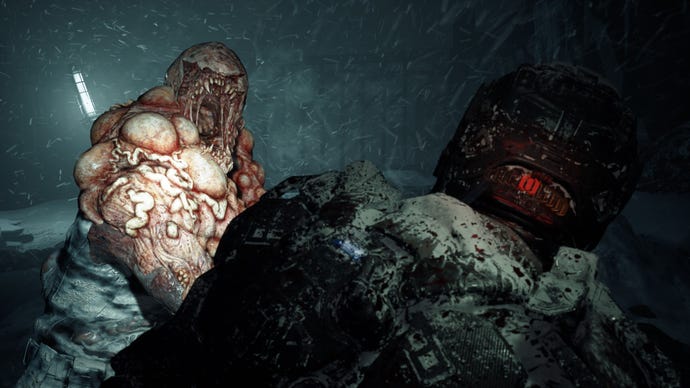
Briefly latching onto the messiness of the combat for a second, James mentions how early on in the game's development they took inspiration from Die Hard's John McClane in the vein of "he doesn't know why he's there, but like, he's just trying to escape and get out." I mean, I can see it as Jacob clomps around the space station's spaces covered in biophage bile.
And as for stalking through dimly lit corridors dripping with slime, the team wanted to build a space station that felt believable. James describes the setting as "that kind of sci-fi where the steps are obvious and the steps are small – a near future step." He makes it clear that the game's horror isn't born from fantasy, but has that small relatability to it, as if this could happen in 300 years time.
I ask whether authenticity was a big thing going into constructing the spaces we’ll explore in the game, to which James explains that they "looked at a lot of space station designs from NASA and things like that". He calls it "generative design" and describes how one of their first was, "How could we 3D print a building?", before he goes on to drop some more knowledge.
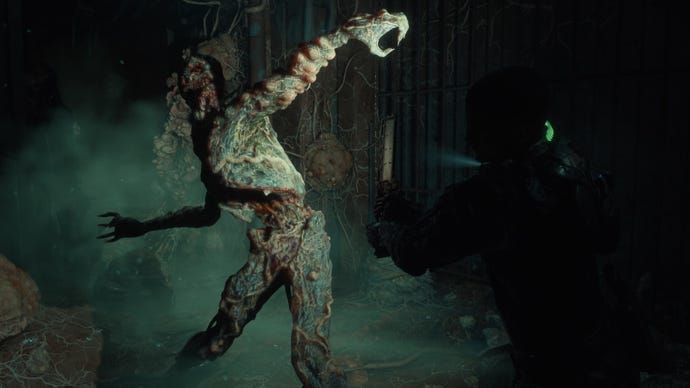
"So, if you actually look in our design, our struts have these kind of geometrical support structures that actually are 3D printed," James says. "So, we looked at a way of delivering very small objects to the moon where our construction materials were 3D printers. Then that really kind of starts to look at how you design the size of corridors... and the way our environment artist actually worked is in modular design pieces, because they wanted to take these kind of constructed 3D objects and then fit them together as if you were building a real spaceship."
Of course, many of the game's corridors are plastered in blood by the time Jacob's finished with them. And I'm convinced that there's plenty of dark humour peppered throughout the game we've seen over the months, like the ridiculous death scenes where Jacob gets chopped in half by large rotor blades, or the way a big mulcher rains blood after you've chucked a biophage into its maw. I ask whether these tidbits of humour were a purposeful design choice by the devs.
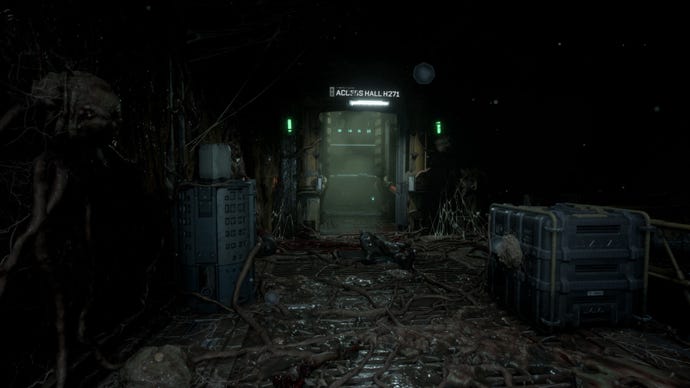
"I'll share this conversation I had with Glenn a while ago," James says. "We were talking about Shaun Of The Dead, which is a very strange film to discuss about this, and he says, 'I kind of want some things to be quite humorous and fantastical'." This even extends to Jacob sliding down a sewage pipe, which they viewed as a bit "tongue in cheek" and helps to break up the tension. "We wanted to have that kind of playfulness sometimes. Because I think if you run a level of fear all the time, you just get people who are like, 'I just can't finish this.'"
Amen to a bit of playfulness amid horror. I'm of the opinion that if horror games take themselves too seriously, then they veer from scary to exhausting. It doesn't have to be some slapstick comedy, mind, just the occasional bizarre moment is enough! And from the sounds of things The Callisto Protocol looks to be gratuitous in its gore and its use of light - and slightly disturbing - relief. And now, as much as I've enjoyed chatting about The Callisto Protocol and watching the game in action, I'm at that point where I'm desperate to go hands-on with it. Give me that controller and send me to space, I want in.
For more Gamescom coverage, be sure to check out our Gamescom 2022 hub for all the latest news, impressions from the show floor and more.
